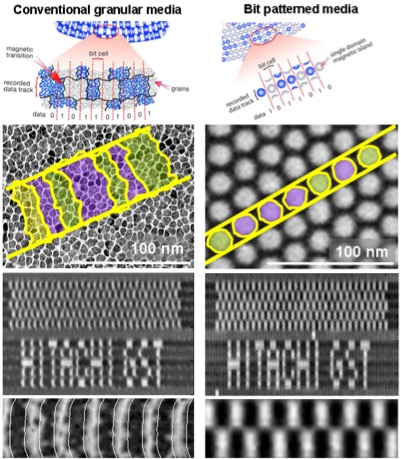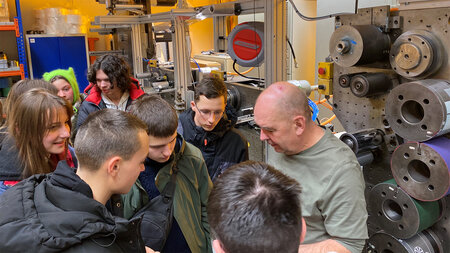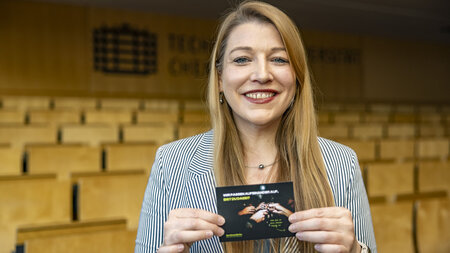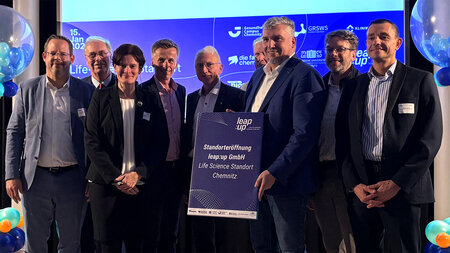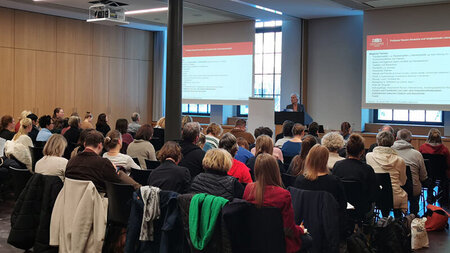Bit Patterned Media (BPM)
Bit Patterned Media (BPM) naturally provides an alternative to granular media structures, where small grains below 7 or 8 nm and corresponding thermal stability issues remain a challenge [1,2]. In BPM the bit cells are pre-defined via lithography and/or self-assembly [3] and every bit is represented by a strongly exchange coupled magnetic unit rather than several weakly exchange coupled grains. Due to the larger critical magnetic volume in BPM as compared to granular media systems thermal stability is not an issue. However predefined bit cells demand for write synchronization and in order to keep bit error rates at a tolerable level very tight Switching Field Distributions (SFD) are required [4,5]. In the past media designs have exploited laminate layers with different anisotropy sources [6] as well as Exchange Coupled Composite (ECC) layers [7,8] for reducing the SFD. Furthermore post (fabrication) annealing procedures proved to be very useful for reducing intrinsic SFD [9].
Figure 2: Comparison of granular perpendicular magnetic recording (PMR, left) and BPR (right) media systems. (a) Illustration of the bit scheme on the disk for both recording systems. (b) Illustration of how the bits are defined within the lateral recording media microstructure. (c) Comparison of static read/write testing on both media systems. (d) High resolution images with alternating up-down bit structure for both recording systems obtained from the static read write tester.
In the future a combination of Heat Assisted Magnetic Recording (HAMR) and BPR are envisioned to yield the highest areal densities in hard disk drive technologies [10]. One reason for that is the thermally better decoupled bit structure of pre-patterned bit cells as compared to granular media layer structures, which would yield even higher lateral thermal gradients in the media for even sharper bit transitions.
Basic research is still needed in the area of SFD reduction and FePt L10 media layer optimization for Bit Patterned – Heat Assisted Magnetic Recording (BP-HAMR).
References:
[1] Thomas R. Albrecht et al., IEEE Trans. Magn. 49 (2013) 773
[2] Thomas R. Albrecht et al., IEEE Trans. Magn. 51 (2015) 0800342.
[3] O. Hellwig et al., Appl. Phys. Lett., 96 (2010) 052511.
[4] O. Hellwig, A. Berger, T. Thomson, E. Dobisz , H. Yang, Z. Bandic, D. Kercher and E. E. Fullerton, Appl. Phys. Lett. 90 (2007) 162516.
[5] B. Pfau et al., Appl. Phys. Lett. 99 (2011) 062502.
[6] O. Hellwig et al., Appl. Phys. Lett. 95 (2009) 232505.
[7] T. Hauet, E. Dobisz, S. Florez, J. Park, B. Lengsfield, B.D. Terris and O. Hellwig, Appl. Phys. Lett. 95 (2009) 262504.
[8] A. T. McCallum et al., Appl. Phys. Lett. 98 (2011) 242503.
[9] O. Hellwig et al., J. Appl. Phys. 116 (2014) 123913.
[10] B. C. Stipe, et al., Nature Photonics 4, (2010) 484 – 488.
Click here to have a look at the corresponding poster


